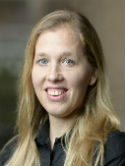Prospectively-validated deep learning model for segmenting swallowing and chewing structures in CT Journal Article
| Authors: | Iyer, A.; Thor, M.; Onochie, I.; Hesse, J.; Zakeri, K.; LoCastro, E.; Jiang, J.; Veeraraghavan, H.; Elguindi, S.; Lee, N. Y.; Deasy, J. O.; Apte, A. P. |
| Article Title: | Prospectively-validated deep learning model for segmenting swallowing and chewing structures in CT |
| Abstract: | Objective. Delineating swallowing and chewing structures aids in radiotherapy (RT) treatment planning to limit dysphagia, trismus, and speech dysfunction. We aim to develop an accurate and efficient method to automate this process. Approach. CT scans of 242 head and neck (H&N) cancer patients acquired from 2004 to 2009 at our institution were used to develop auto-segmentation models for the masseters, medial pterygoids, larynx, and pharyngeal constrictor muscle using DeepLabV3+. A cascaded framework was used, wherein models were trained sequentially to spatially constrain each structure group based on prior segmentations. Additionally, an ensemble of models, combining contextual information from axial, coronal, and sagittal views was used to improve segmentation accuracy. Prospective evaluation was conducted by measuring the amount of manual editing required in 91 H&N CT scans acquired February-May 2021. Main results. Medians and interquartile ranges of Dice similarity coefficients (DSC) computed on the retrospective testing set (N = 24) were 0.87 (0.85-0.89) for the masseters, 0.80 (0.79-0.81) for the medial pterygoids, 0.81 (0.79-0.84) for the larynx, and 0.69 (0.67-0.71) for the constrictor. Auto-segmentations, when compared to two sets of manual segmentations in 10 randomly selected scans, showed better agreement (DSC) with each observer than inter-observer DSC. Prospective analysis showed most manual modifications needed for clinical use were minor, suggesting auto-contouring could increase clinical efficiency. Trained segmentation models are available for research use upon request via https://github.com/cerr/CERR/wiki/Auto-Segmentation-models. Significance. We developed deep learning-based auto-segmentation models for swallowing and chewing structures in CT and demonstrated its potential for use in treatment planning to limit complications post-RT. To the best of our knowledge, this is the only prospectively-validated deep learning-based model for segmenting chewing and swallowing structures in CT. Segmentation models have been made open-source to facilitate reproducibility and multi-institutional research. |
| Keywords: | radiotherapy; dysphagia; radiation therapy; trismus; head; images; organs; cancer; at-risk; auto-segmentation; deep learning; swallowing and chewing structures |
| Journal Title: | Physics in Medicine and Biology |
| Volume: | 67 |
| Issue: | 2 |
| ISSN: | 0031-9155 |
| Publisher: | IOP Publishing Ltd |
| Date Published: | 2022-01-17 |
| Start Page: | 024001 |
| Language: | English |
| ACCESSION: | WOS:000743311600001 |
| DOI: | 10.1088/1361-6560/ac4000 |
| PROVIDER: | wos |
| PUBMED: | 34874302 |
| PMCID: | PMC8911366 |
| Notes: | Article -- Source: Wos |
Altmetric
Citation Impact
BMJ Impact Analytics
MSK Authors
Related MSK Work













